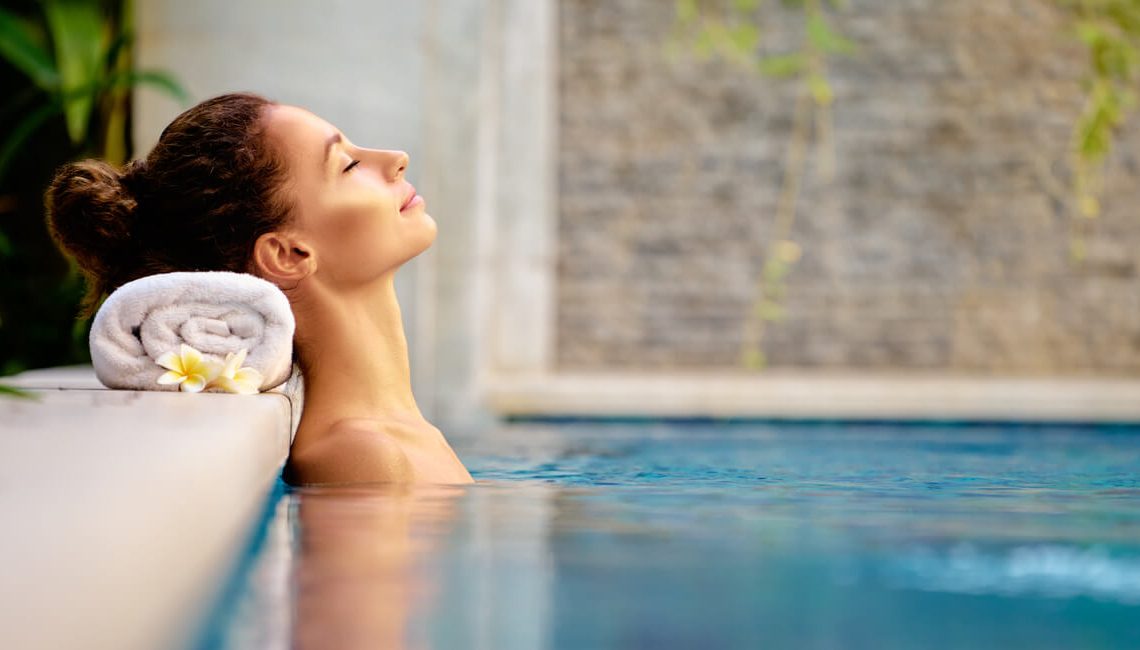
The holidays have got us used to slower rhythms and more contact with nature. The spa allows us to maintain these good habits even after returning from our vacation. However, take the following precautions to do so without risk.
Back-to-work stress? The best way to avoid it is to let go of the summer habits gradually, without suddenly resuming one’s hectic everyday life. Indulge in the outdoors, take a walk, ride a bike, stay in contact with nature as much as possible, don’t give up the pleasure of an ice cream: you can use all these gimmicks to hold on to that holiday feeling a bit longer.
Even a spa day can help, because it prolongs our contact with water, the true protagonist of the summer holidays. Beware though: spas should be used wisely to obtain maximum benefits and avoid unpleasant consequences.
First of all, hygiene: these environments are particularly complex from the point of view of cleaning and sanitation, since they present very specific problems related to the risk of bacterial, fungal and parasitic contamination. Legionellosis, mycosis and amoebiasis are the most frequent infectious pathologies due to hot-humid environments and promiscuity. However, even if by law thermal baths are considered health facilities, there is no specific and common legislation they should comply with. In fact, the sector is regulated by Law 323/2000 (Reorganization of the Thermal Sector) which in no way mentions the health and hygiene criteria that spas must follow, nor does it deal with issues related to pathogens which are widespread in communal environments, passing the buck of the issue to the individual Italian regions.
Legionella is transmitted to humans through the inhalation of contaminated aerosols, therefore any place where one can come into contact with nebulized water should be considered at risk of this serious lung infection. Among mycoses, athlete’s foot is the most common form contracted in swimming pools, gyms and spas, because pathogenic fungi easily proliferate in hot-humid environments, and walking barefoot in these conditions is a surefire way to contract the disease. Amoebas and other intestinal parasites can spread easily in case of fecal contamination of the spa structures.
Although we cannot microbiologically analyze a structure before using it, we should take a look around to get an idea of its hygienic conditions. First of all, look at whether the rules are well highlighted and, above all, if they are enforced. Of course, those with visible skin infections or wounds should not be allowed in the spa until they recover. Washing one’s feet, taking a shower before entering the pool or saunas should always be mandatory, as is wearing special slippers and using towels to avoid contact with deckchairs, sunbeds and sauna benches: not only are these the basic rules of personal hygiene and prevention, but also a sign of civility and respect for others. The state of the surfaces with which we come into contact is also important: they must be clean, without hair, foam or slime. Limestone incrustations could be considered normal in water-saturated environments, but they are an actual breeding ground for bacteria and fungi and therefore should never be present in a spa.
Other precautions must be taken especially with regard to extreme temperatures, hot or cold, to which we subject ourselves in a spa. High temperatures help relieve muscular cramps, rheumatic pains, they stimulate sweating and thus the elimination of toxins. On the other hand, they are contraindicated in acute inflammations (tendinitis, bursitis, muscle strains), in patients suffering from venous insufficiencies, so one should avoid staying in hot areas too long, generally leaving the room when before you start to feel the strain.
After lying in saunas or hot tubs, a cold shower will help kickstart your circulation and tone your muscles. If you wet your extremities first and then the rest of your body, a cold shower will be less traumatic. On the way out of the spa, the use of soaps, body washes and shampoos can be harmful if one doesn’t opt for delicate detergents, with a slightly acid pH; it’s equally important to use them diluted, albeit not excessively.
Article of Dr Adele Sparavigna for https://4me.styl


